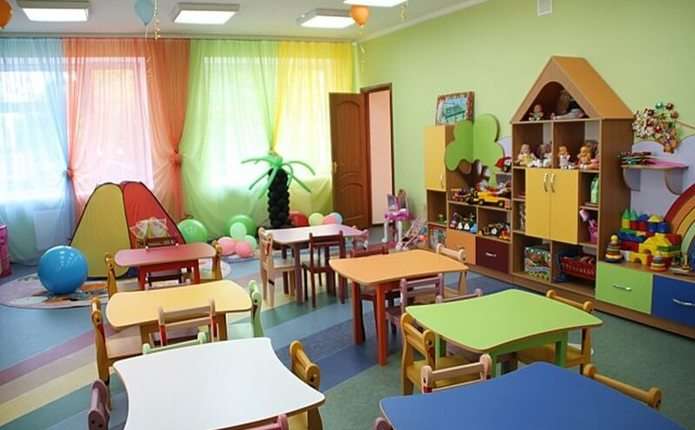The baby boom is postponed: Ukraine is closing kindergartens en masse
24 March 11:58
For the first time in two decades, queues for kindergartens have disappeared in Ukraine. According to the Ministry of Education and Science, there are currently 881,000 children aged 1-6 in the country, of whom approximately 750,000 receive preschool education. However, in some towns and villages, there is a significant shortage of children in kindergartens, as reported by Deputy Minister of Education and Science Anastasia Konovalova. How critical the situation is and what it can lead to,
As Deputy Minister Anastasia Konovalova noted in a conversation with the press, today there is a situation where not only have queues disappeared, but some kindergartens are idle without children. And even in Kyiv, there are institutions with many vacant places, although some still have a short waiting list. In any case, this is the first time in history that such a situation has been observed in the capital.
According to Konovalova, the birth rate has been declining from year to year, but there hasn’t been a catastrophe like this. According to forecasts, in 2027 there will be 570 thousand children aged 1-6 in Ukraine. Therefore, due to the lack of children in some kindergartens, they may have to be mothballed until the post-war “baby boom” occurs. Or they may have to be “compacted”: close the second floor, and close two or three group rooms.
Kindergartens are closing due to low birth rates
Indeed, since last year, pre-schools have been actively closing all over Ukraine. For example, almost 20 preschools were closed in Poltava region last year, three in Kremenchuk alone, and four in Pyriatyn. Most of them were not operating at full capacity, so their work was stopped and the children were transferred to other kindergartens.
In Zaporizhzhia, it was decided to merge two kindergartens into one to optimize operations.
Due to the lack of the required number of children, a kindergarten in the village of Hontovka in the Chernivtsi community was closed.
If a group should have 20 children, but in fact there are not enough of them, there are only nine children aged 3-6 in the village. There are dozens or even hundreds of such examples across the country. After all, the process continues, kindergartens are being closed.
As noted in the commentary
“There was a period in Ukraine from 2002 to 2012 when the overall birth rate was growing. But since 2013, the number of births has been decreasing, and since 2016 – very sharply. And in recent years, after the full-scale invasion, we have also seen a massive migration of Ukrainians with young children abroad. In addition to the decline in the birth rate, the number of children has also decreased due to migration,” emphasizes Svitlana Aksenova.
However, as the leading researcher notes, when it comes to attending kindergartens, there are nuances. “The main requirement now is to ensure the safety of children and to equip an appropriate bomb shelter, but not all parents are ready to send their children to a preschool even with a shelter. Some believe that it will be safer to stay at home with their families, and this is again a disadvantage for kindergartens, as groups are not filled.
Follow us on Telegram: the main news in brief
“We already have the sad experience of how kindergartens were closed en masse in the 90s due to the decline in the birth rate. And eventually, when the birth rate normalized, educational institutions were not ready to accept children. We need to be very careful here and remember this experience. If, God willing, the situation settles down and families with young children start returning, we must be ready to reopen them,” emphasizes Svitlana Aksenova.
Pandemic and war are not in favor of demographics
In fact, the fact that in 2027 there will be only 570 thousand children aged 1-6 in Ukraine is quite expected. In addition to the full-scale invasion, there was a pandemic and quarantine before that. The birth rate has fallen sharply again since 2020. Epidemiological and socio-economic factors had an impact.
“We understand that the calculation for 2027 includes children born in 2021, when the birth rate was low. But if we take into account how many of these children left the country, this figure may be even lower than expected. After all, 176,679 children were born in 2024, 187,387 in 2023, and it is unknown how many of them remained in the country,” the demographer emphasizes.
The war in Ukraine is ongoing, and many families are postponing the birth of a child until the peaceful period. Although we cannot talk about a baby boom, Svitlana Aksenova believes that there will be a slight increase in the birth rate.
“When any negative factor is in place, it leads to a reduction in the birth rate, and when this factor disappears, it stimulates the birth rate. However, given that we already have a very low birth rate, even if those who have been postponing births give birth, it cannot be called a baby boom. But another factor that will affect the birth rate will be when the war ends and under what conditions. If there is still uncertainty and threats, I’m afraid the situation will be difficult – many families will opt for having only one child, at best,” the demographer emphasizes.
On the positive side, according to Svitlana Aksenova, most Ukrainians are serious about planning childbirth, responsible and balanced.
Follow us on Telegram: the main news in brief
Author: Alla Dunina









